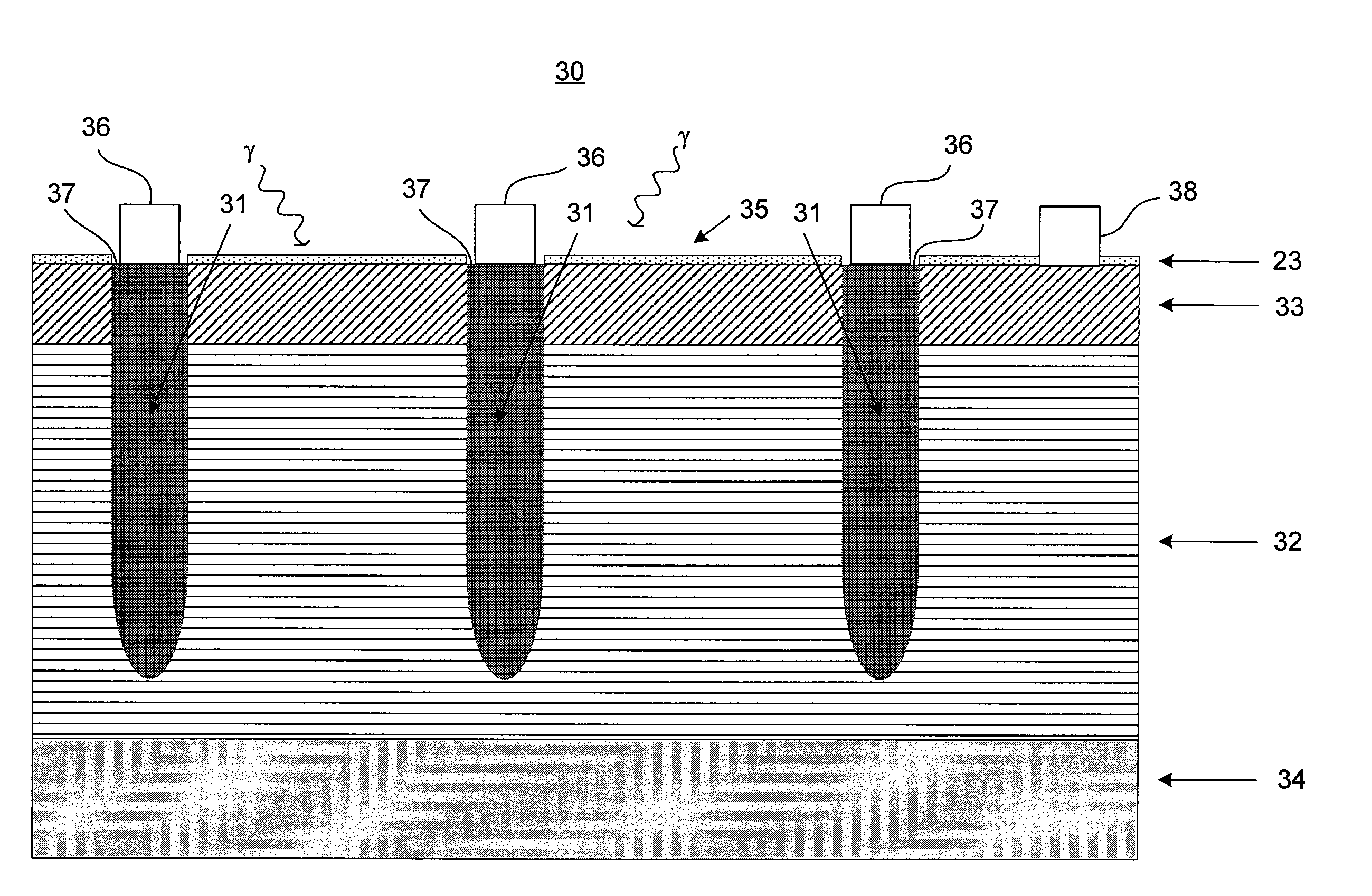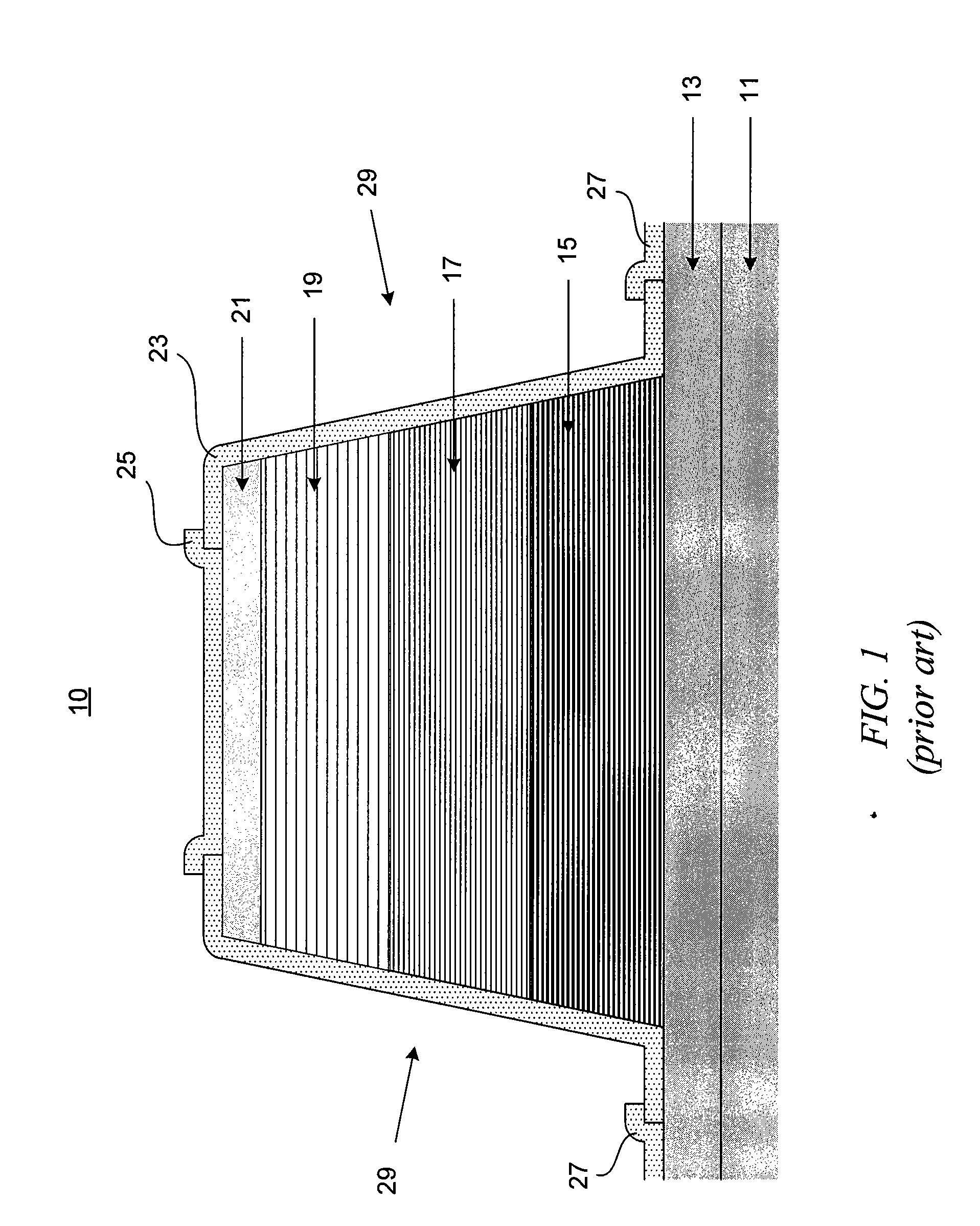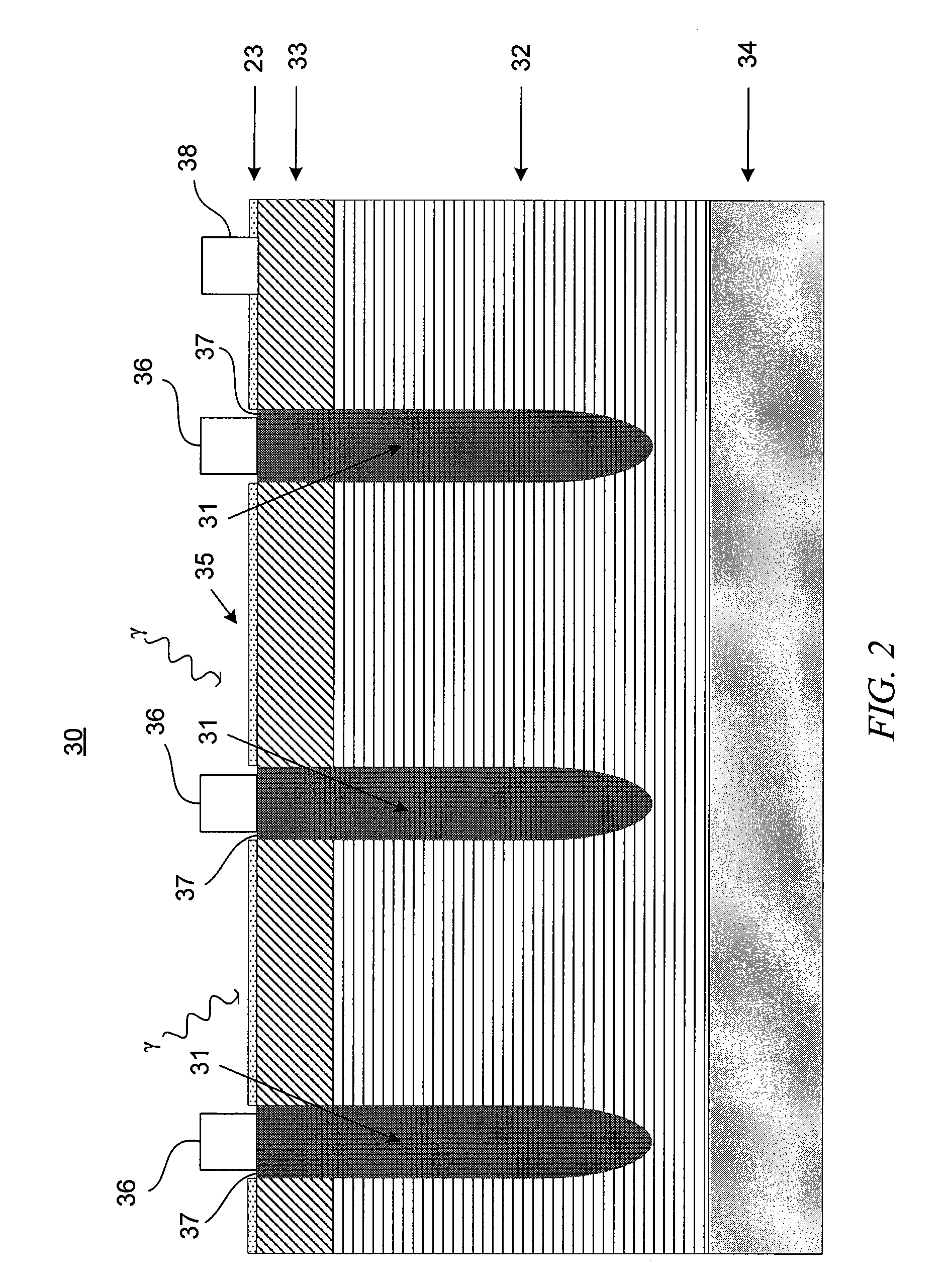Lateral collection architecture for sls detectors
a detector and lateral collection technology, applied in semiconductor devices, solid-state devices, nanotechnology, etc., can solve the problems of inherently difficult passivation process of sls detectors, degrade the performance of the photodiode, and the foregoing photodiode architecture suffers from a number of problems, so as to promote the lateral collection of photogenerated charge carriers, enhance the lateral mobility of carriers, and improve the effect of fill factor
- Summary
- Abstract
- Description
- Claims
- Application Information
AI Technical Summary
Benefits of technology
Problems solved by technology
Method used
Image
Examples
Embodiment Construction
[0050]This disclosure presents exemplary embodiments of the invention of lateral collection architecture for quantum confined diode structures (e.g., SLS photodetectors, layers or structures, quantum dots, etc.). This architecture has particular application for fabricating photodiode arrays and provides a superior alternative to conventional mesa-etched designs. The invention introduces the concept of forming planar photodiodes from SLS structures of a single carrier type (n or p) by diffusing or implanting dopants of opposite carrier type within the SLS structure in a direction transverse to the superlattice layers. This creates diode junctions that terminate in wide bandgap material, and permits the diodes to collect photogenerated carriers that diffuse laterally (as well as vertically or transversely) through the superlattice. In addition, for each diode so formed, the junction area for a given optical area can be smaller than that provided in a conventional mesa structure, resul...
PUM
 Login to View More
Login to View More Abstract
Description
Claims
Application Information
 Login to View More
Login to View More - R&D
- Intellectual Property
- Life Sciences
- Materials
- Tech Scout
- Unparalleled Data Quality
- Higher Quality Content
- 60% Fewer Hallucinations
Browse by: Latest US Patents, China's latest patents, Technical Efficacy Thesaurus, Application Domain, Technology Topic, Popular Technical Reports.
© 2025 PatSnap. All rights reserved.Legal|Privacy policy|Modern Slavery Act Transparency Statement|Sitemap|About US| Contact US: help@patsnap.com



